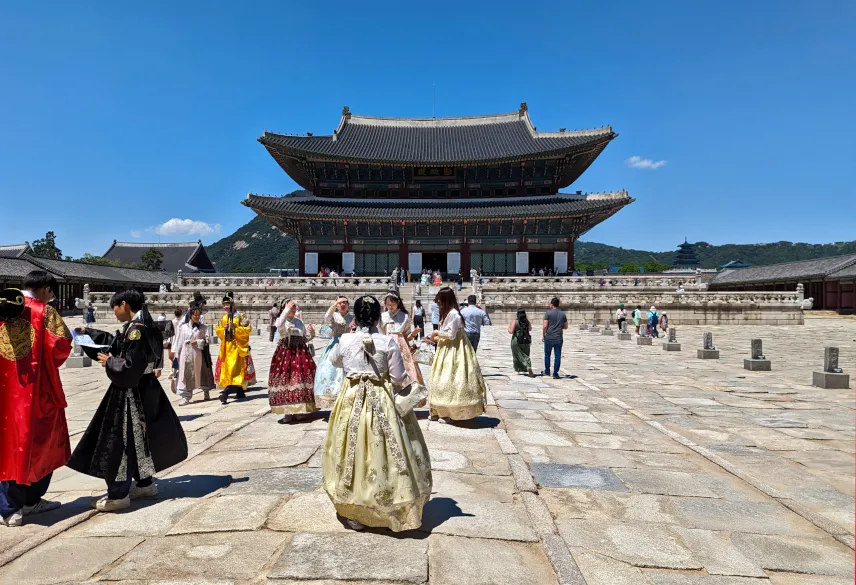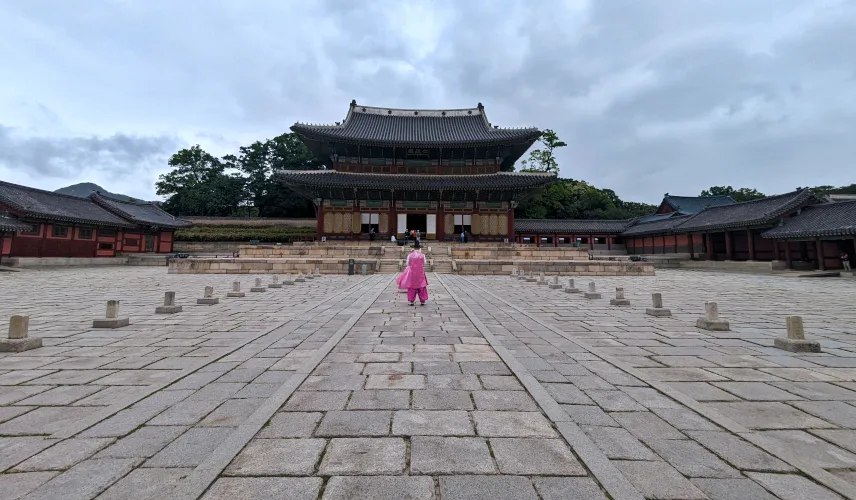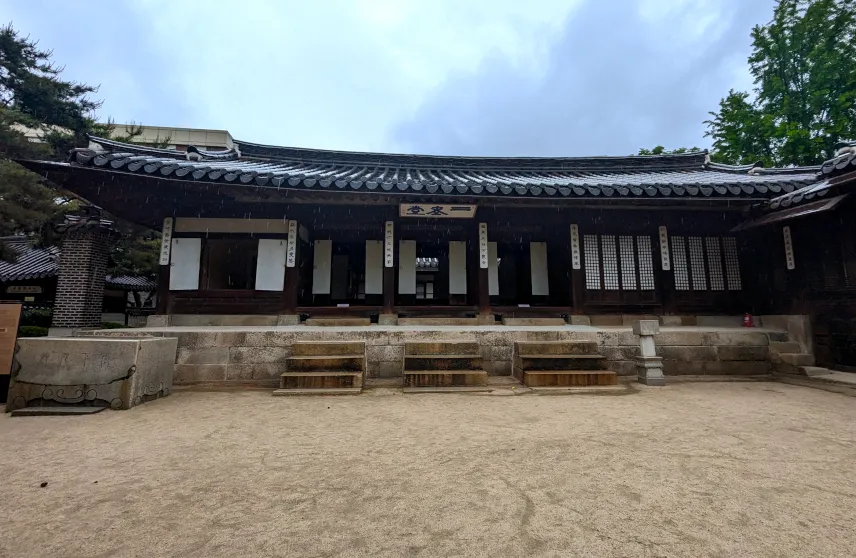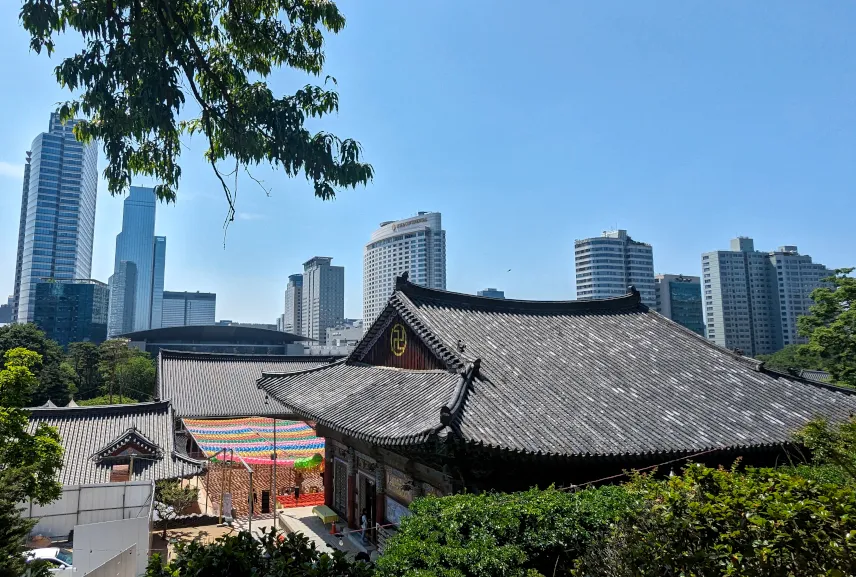
4 Day Seoul Itinerary With Map
TL;DR
You have 4 days in Seoul Korea, we have the perfect itinerary for you!
Real talk: We only ended up in Seoul because the flights home were much cheaper from here than from Japan. And we almost made a mistake there because Seoul completely blew us away. In our 4 days itinerary in Seoul, we’ll include everything that makes Seoul such a great city: The sights, the history, the modern lifestyle, the food, and of course the spas.
If you’re wondering how much time you need in Seoul, we think that you can see the highlights of Seoul in 4 days. We could have spent much longer to soak in more of the atmosphere and venture off the beaten path more. I guess we have to come back.
Seoul 4 Day Itinerary
- Get a T Money card to stay mobile.
- Get an eSIM card to stay connected.
- Download Naver Map for navigation.
- Check out our complete South Korea itinerary.
4 Day Itinerary in Seoul Map
Where We Stayed for Our 4 Days Seoul Itinerary
We stayed at Seoul Cube Jongro. The location was amazing. We could walk to many points of interest like Gyeongbokgung Palace, Insadong, and Myeongdong. Public transport was also super close and the connection to the airport was easy. The capsules were comfy and clean and so were the bathrooms.
We absolutely loved the free breakfast in the morning which we could prepare ourselves!
Seoul Itinerary 4 Days
Day 1 – History and Culture
Morning – Palaces and Museums
In case you stay at Seoul Cube Jongro or nearby, start your day by walking along the Cheonggyecheon Stream towards Seoul City Hall at the very heart of Seoul. In front of the current city hall, you can find the old city hall building, now the Seoul Metropolitan Library.

In case you’re a history buff, we recommend Deoksugung Palace right next door. This palace is unique because of its Western-style buildings, garden, and fountain. In fact, Jeonggwanheon was the first ever Western-style building built in a Korean palace. You can also find the Neo-Renaissance style buildings Seokjojeon and Seokjojeon West which both house museums nowadays.

The Seoul Museum of Art is our top choice for an art museum in Seoul. It’s right behind Deoksugung Palace and houses permanent as well as special exhibitions on the floors. This was our personal first glimpse into Korean art and we enjoyed it a lot.

Next, stroll to Gwanghwamun Square, the main square of Seoul. Check out landmarks like the water fountain and statue in honour of Admiral Yi Sun-sin as well as a tall bronze statue of King Sejong who invented the Korean alphabet.

In the vicinity of Gwanghwamun Square, you can find two of the main history museums of Seoul: The Seoul Museum of History and the National Museum of Korean Contemporary History. Entrance to both is free so we again recommend you to pick at least one.

Next, enter Gyeongbokgung Palace, the main palace of Seoul, via Gwanghwamun Gate. The palace was built in 1395 and served as the main royal palace of the Joseon dynasty. The area is huge with several courtyards, buildings, pavilions, and gates.
Twice a day, you can witness a recreation of the changing ceremony of the royal guard.

Right next to Gyeongbokgung Palace, you can find the National Folk Museum of Korea. The entrance is free so we think it’s well worth at least a pit stop. You can learn loads about Korean customs and traditions in a very well-curated bilingual (Korean and English) exhibition.

Quick Lunch
You’re probably craving some food and a rest by now. We recommend Nuldam Space. The cute cafe is basically right next to you and it comes with a cool twist: You can send a letter to your future self!
Afternoon – More Palaces and Shrines
After your lunch break, head to Bukchon Hanok Village. It’s a lovely area full of traditional Korean houses (Hanoks) with views of Namsan Seoul Tower in the distance. Nowadays, it’s a very popular picture spot.

If you’re not all “palaced out” yet, we recommend you to head to Changdeokgung and Changgyeonggung Palace next as they are only a 15-minute walk from the Hanok Village.
They are two of the Five Grand Palaces of Seoul which are connected to each other. Changdeokgung Palace is the best preserved of all five palaces. Its most notable feature is the Secret Garden with a small pond, a pavilion, and a 300-year-old tree.
Changgyeonggung Palace right next to it is a nice little addition.

Next, head to your first shrine of the day, Jongmyo. It is the oldest royal Confucian shrine preserved and part of the UNESCO World Heritage List. It was under construction at the time of our visit so we don’t have any pictures.
Right to the east of the shrine, you can find Ikseon-dong Hanok Village. It’s a cluster of small alleys with Hanoks which have been converted into cute shops and cafes. Here, you can also visit the small Unhyeongung Palace for free.

Right next to Ikseondong, there’s Insadong, Seoul’s art district. The area is filled with art shops and traditional tea houses. Of course, you can also find loads of art galleries. We especially liked the Insa Art Center with many stories of art and a free rooftop terrace.

We suggest Jogyesa Temple as your last stop of the day. It was built in 1396 and has been the main temple of the Jogye school of Zen Buddhism in Korea since 1936.

Dinner – Noodles
Honestly, we were knackered after this packed day. We just walked back to our accommodation and had some Naengmyeon (icy cold noodles) on the way. We marked the spot on our map because it was super tasty.

Day 2 – Gangnam, Hongdae, and Itaewon
Morning – Gangnam
Today will be quite a stark contrast to yesterday. We’ll start the day in Gangnam, one of Seoul’s hip areas – and definitely the most affluent one.
Hop on the subway and head to Bongeunsa Station. The station is named after Bongeunsa Temple, a Buddhist Temple from 794. Its location on the slope of Sudo Mountain offers a nice view with the historic temple standing out against the skyline of Gangnam in the background.

The temple is located right across the street from COEX Mall. The main sight of the mall is Starfield Library. Every Instagrammer and their mom seem to take pictures here.
In contrast to popular belief, this library is not only a cool photo op. It also houses 50,000 books and 600 magazines, some of them also in English, for you to read!

Right in front of COEX Mall, you can find the Statue of Gangnam Style. In 2012, the K-pop song "Gangnam Style" by South Korean entertainer Psy made Gangnam world famous. And the city decided to honour him by putting up a giant bronze display of the Gangnam Style hand gesture – accompanied by the song blasting from speakers in an endless loop.

You can also embark on some upscale shopping in Gangnam – supposedly Gangnam-daero is a good address for that. As shopping is not really our scene, we headed on to Hongdae to grab some food.
Lunch – Dak-galbi
Dak-galbi or spicy stir-fried chicken is a popular Korean dish. Locals told us that you can find some of the best in Hongdae. Many dak-galbi restaurants have round hot plates that are built into the tables and so does our restaurant recommendation Yoogane Chicken Galbi.

Afternoon – Hongdae
After lunch, walk around Hongdae a bit more. We loved strolling down Hongdae Street with its many quirky shops and street food options. Gyeongui Line Forest Park is another cool spot in the area.
Hongdae refers to the area around Hongik University. While it’s not full of sights, it’s a very young neighbourhood full of cafes, restaurants, and boutiques. We enjoyed our time here a lot.

In case you’re tired and almost done with your day, end it at Chicken and Beer Street and grab some – you guessed it – chicken and beer. Otherwise, head on to Itaewon.
Evening – Itaewon
Itaewon is known as Seoul’s international district – and it’s living up to its name! Originally, it’s where American soldiers stayed after the Korean War. Nowadays, you can also find places like Little Vietnam (Vietnam Quy Nhon Gil) or Little Arabia around Seoul Central Mosque.
The heart of Itaewon is World Food Street also known as the International Tourist Zone. Nowadays, the area is favoured by backpackers and a popular pub crawl destination.

Itaewon also has some stuff in store for people who aren’t party animals: The Leeum Museum of Art is one of the best art museums in Seoul – one exhibition is free.
Other places you can check out include Itaewon Antique Furniture Street and Itaewon Bugundang Historical Park which provides great views across Seoul.
In case you’re still not tired or not a party animal, the Banpo Bridge Rainbow Fountain might be for you. When the sun sets, the Rainbow Fountain shoots 20 meters down into the Han River from both sides of Banpo Bridge. 200 lights light up the fountain dancing in sync with music.

Day 3 – Day Trip to the DMZ
To better understand the past and present of Korea, we recommend you take a day trip to the DMZ, the demilitarized zone between North and South Korea. The best way to get to the DMZ is via a guided tour.
We visited
- 3rd Invasion tunnel
- Dora Observatory
- Imjingak
- Unification Village
- Mt. Gamaksan Suspension Bridge
with DMZ Adventure and can fully recommend it. Along the way, we learned a lot about the countries and our guide’s personal history.

Day 4 – Modern Seoul
Morning – Korean Spa
We are spa lovers so for us, a visit a Korea wouldn’t have been complete without a visit to one of the infamous Korean spas.
We opted for Jongro Sauna as it was close to our accommodation and very affordable. The women’s area had showers, two hot pools and a cold pool as well as a sauna. I also opted for a spa treatment including a very thorough body scrub. The treatment took place on loungers on the side of the room and the lady did not speak any English but we managed. Still, it was an experience I wouldn’t want to miss.

Lunch– Gwangjang Market
The single best spot for food in Seoul is probably Gwangjang Market. The street food here might be the most famous in the country. It was featured in Netflix's “Street Food: Asia” series. And of course, the infamous Anthony Bourdain ate here. Some of the best dishes to get are Bindaetteok (Mung Bean Pancakes), Kimbap (bite-size dried seaweed rolls), and Tteokbokki (Spicy Rice Cakes). You can also try Sannakji (live octopus!).
It’s a cool sight even if you’re not much into food. It is the oldest permanent market in Korea. There are over 5000 stalls that sell loads of different goods.

Afternoon – DDP & Namsan Seoul Tower
From Gwangjang Market, walk along the Cheonggyecheon Stream towards DDP (Dongdaemun Design Plaza). Cheonggyecheon Stream is a natural stream with two lovely walking paths on both banks which lead from east to west through downtown Seoul.
DDP is one of the coolest buildings in Seoul. It is comprised of five halls: Art Hall, Museum, Design Lab, Design Market as well as Dongdaemun History and Culture Park. You can also find remnants of the Seoul City Wall on the premises.

Next, head to Namsan Seoul Tower. It is set on the top of Namsam Mountain and offers 360-degree views across Seoul. Namsan Seoul Tower is also a great spot to watch the sunset!
The cheapest way to reach Namsan Seoul Tower is by bus but you can also take the Namsan Cable Car. It is an easy walk away from Myeongdong.

Evening – Myondong
Myeongdong is one of Seoul's main shopping and tourism districts. Wandering the streets, you can find several shopping malls, shops from Korean and international brands, and a total of 6 Olive Young stores. It’s one of the best places to experience the modern side of Seoul.
Myeongdong is also a great spot for street food – there’s even a night market.

In case you’re craving Korean BBQ for dinner, we have marked an all-you-can-eat restaurant in Myeongdong on our map which is super affordable.

Night – Euljiro-dong
If you’re not too tired, how about a night out in Euljiro-dong? According to locals, this is one of the best areas for Chimaek (chicken and beer). Euljiro Nogari Alley is especially famous for pubs and nightlife but we also enjoyed Sunset Record Bar nearby

Disclaimer: This post contains affiliate links. If you use these links to buy something we may earn a commission. You would help us a lot if you do so. Thanks.
